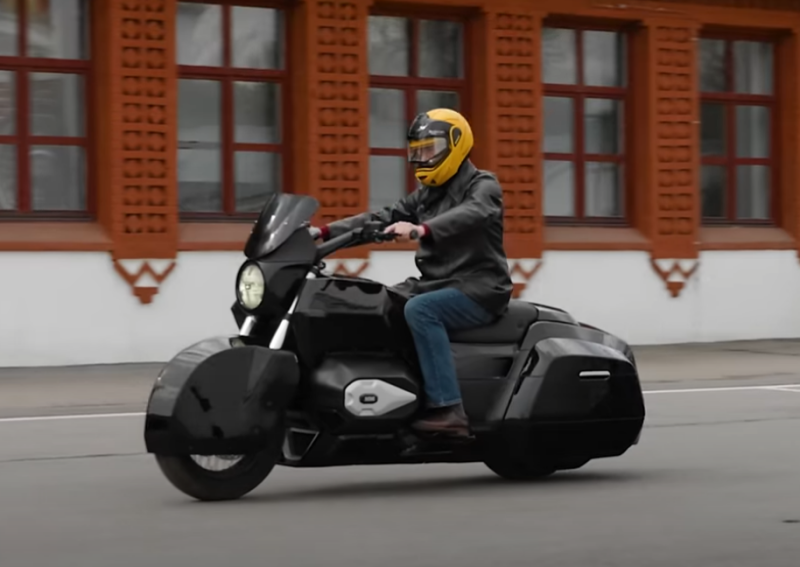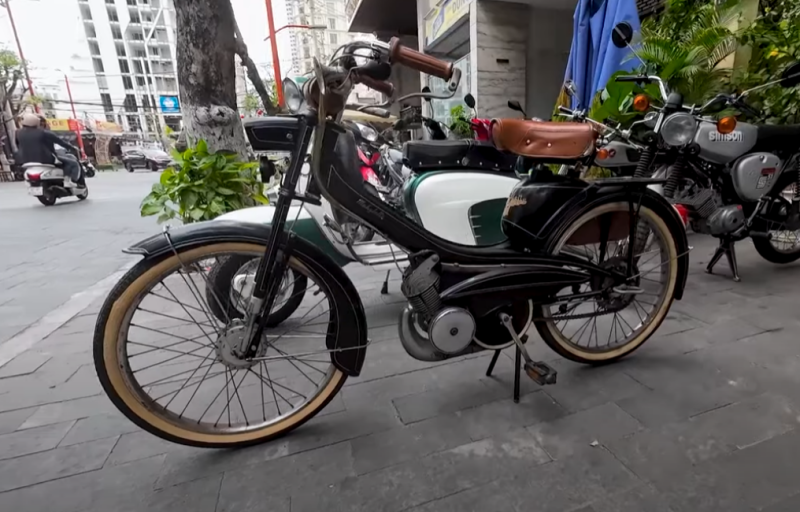But among such a multitude there is also a “subtle intelligentsia” intended for specific use. No, I don't mean any glamorous examples. We are talking about tractors with a small load capacity and not very powerful engines. I would classify them as auxiliary assistants.
 The old T-16 self-propelled gun is still ready to work. Photo: youtube.com
The old T-16 self-propelled gun is still ready to work. Photo: youtube.comAnd this characteristic does not at all detract from their role in the overall system. Many private owners and small farms are without them without their hands. And it often turns out that a small tractor is used much more often and more efficiently than its older comrades. This was well understood in Soviet times, although, of course, there were no farmers then, and many looked askance at private owners.
Not just a tractor
Taking into account the specifics of the upcoming work, such mechanisms received a completely different layout from classical technology. If in the latter case there was a tractor for working with trailer bodies or attached equipment at the rear, then the options being considered today are called “self-propelled tractor chassis.”
The thing is that they had a solid frame with an engine under the driver's seat and a dump body in front. Also, instead of a platform, various compact attachments could be used. One way or another, the advantage of the technology was its autonomy and the ability for the driver to constantly monitor the ongoing process.
 Front axle T-16. Photo: youtube.com
Front axle T-16. Photo: youtube.comWhat am I talking about? Experienced tractor drivers will understand and confirm how inconvenient it is (especially in the absence of rear-view mirrors) to work on one of the representatives of more powerful agricultural machinery, all the time turning back to monitor what is happening.
The production of self-propelled chassis was mastered at the facilities of a specialized Kharkov plant (KhZTSSh). Back in the mid-50s, the company produced the DShS-14 model (with a 14-horsepower engine). A little later they resorted to modernizing it, introducing the more powerful DVSSh-16. Until the beginning of the 60s, 23,1 thousand chassis units were produced in this and previous versions for Soviet citizens.
Improved and in demand new product
But the idea of a complete update of the model range was already in the air. This was required, among other things, due to the constantly increasing demand for equipment of this type. This fact is best confirmed by output volume indicators. The new product of the 60s, produced by the Kharkov plant, exceeded the number of assembled predecessors by 26 times, having stood on the assembly line for three and a half decades!
The Kharkov Design Bureau for tractor self-propelled chassis has subjected the DVSSh-16 to a deep modernization. The result was a new version introduced in 1961 - the T-16.
In its original configuration, it was produced by the company from 1961 to 1967. This technique has become very popular and widespread, so it received several nicknames at once, including “chassis” and “dashechka”. This reliable hard worker had good cross-country ability and other qualities necessary for a tractor:
✅ places of fastenings for various equipment
✅ unpretentious diesel drive
✅ possibility of use as delivery equipment
The third point, perhaps, became the most important in the history and popularization of the T-16. And I can confirm this from personal experience. One fellow countryman living in the private sector acquired such a copy. Almost every day he transported something on it, using it for all sorts of purposes. In general, this chassis was used for:
✅ delivery of silage to farms
✅ removal of small batches of waste
✅ installation of grader shovels, road brushes, etc.
Additional equipment of other types was often installed on a reliable chassis. In the village it could be a hay mower, and in other places it could be a loader or chain saw. For their operation, the T-16 design included the installation of a power take-off shaft (PTO). All this work was supported by a reliable diesel drive with the following characteristics:
✅ two-cylinder
✅ 16 hp
✅ with 7-speed gearbox
✅ from 1 to 3 PTO (depending on modification)
The original configuration included an open workplace for the tractor driver. Of course, this was not the best solution in terms of the fact that all the dust, rain, insects, etc. (moving through the air) got into the driver’s eyes and mouth. On the other hand, the equipment was intended primarily for local use, so the problem was not so acute.
Nevertheless, the more widespread and varied use of the T-16 prompted the creators to add comfort in operating the equipment: subsequent modifications already had a closed single-seat cabin, under which the diesel engine was still located.
 The dashboard in the chassis cabin. Photo: youtube.com
The dashboard in the chassis cabin. Photo: youtube.comIn this version, the chassis, initially oriented for auxiliary work in vegetable growing (spraying crops) and as a row-crop cultivator, has significantly expanded the range of use. It turned out that the T-16 looks just perfect as a compact delivery truck. Especially considering its good cross-country ability.
Later, rural “shabashniks” also chose it, using it in various types of construction work: transporting small quantities of building materials, driving winches, welding machines and other mechanisms. Portable circular machines were also connected to it. Given such extensive and varied use, manufacturers had to master the production of a huge amount of additional equipment for the T-16 self-propelled chassis.
This number includes not only the compressor station or sprayer. There was an option for self-loading piece or bulk materials, a hay mower and hay thrower (for agriculture), and a mini loader/excavator. Sometimes a compressor station was even installed on the basis of the sought-after T-16.
 Tractor driver's workplace. Photo: youtube.com
Tractor driver's workplace. Photo: youtube.comIn the initial version, production of which continued until 1967, 63,5 thousand units of popular equipment were created. After this, its production went on a short pause. It lasted only a couple of years, because the multi-purpose tractor continued to remain in very high demand.
Modifications with cab and improved performance
Although the tractor was almost perfect, there is no limit to perfection. In addition to the lack of a roof over the driver’s head, the disadvantages also include overly sensitive controls (including due to the “body in front” layout) and working with the PTO, which requires sufficient skills. They tried to fight them in subsequent modifications of the technology.
At the end of the 60s, Kharkov residents presented a modernized version of the T-16M with a more powerful power unit. It has already received extended sides, a new gearbox and some other design changes. Now it is possible to install a frame tented cabin with doors. The chassis was produced in this form for two decades until it received an updated version of the T-16MG. Here are the main differences between the different modifications (T-16, in brackets - T-16M / T-16MG):
✅ years of production – 1961-1967 (1967-1995 / 1986-1995)
✅ speed fork – 1,5-17,5 (5,5-23,2) km/h
✅ power – 16 (25 / 25) l. With
✅ operating weight – 1685 (1810 / 1730)
✅ number of gears (forward/backward) – 4/4 (7/1)
The improved options not only received the upgraded D-21A1 diesel engine. The T-16MG also had a full-fledged cockpit and modified mechanisms that increased the reliability of the design as a whole. All this added to the popularity of the tractor, which was used in agriculture, among public utilities, and during road work. The most popular was the T-16M, assembled in the amount of 470 thousand units.
 Twin-boiler T-16 engine under the seat. Photo: youtube.com
Twin-boiler T-16 engine under the seat. Photo: youtube.comAlthough production of the equipment completely ceased by 1996, it can still often be found in rural areas or small towns. Sometimes you even come across examples of the primary layout (without a roof), which serves as living proof of the reliability and durability of these self-propelled chassis.










